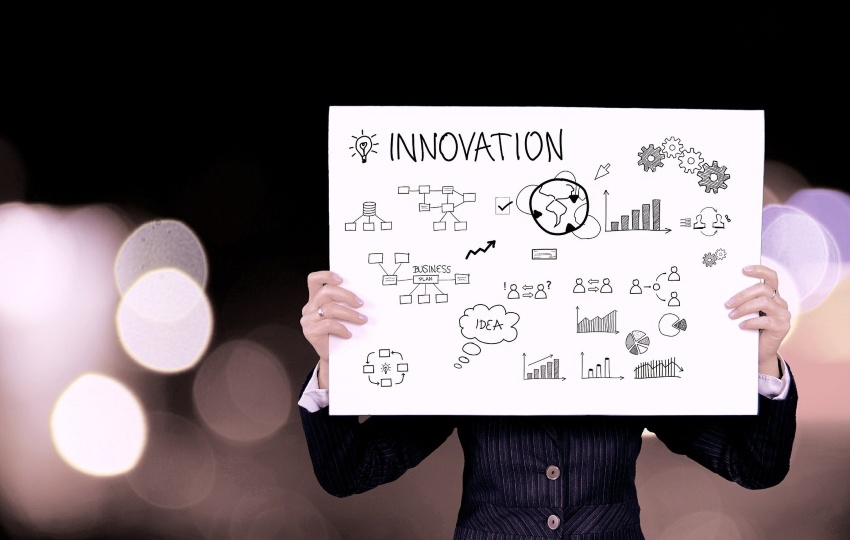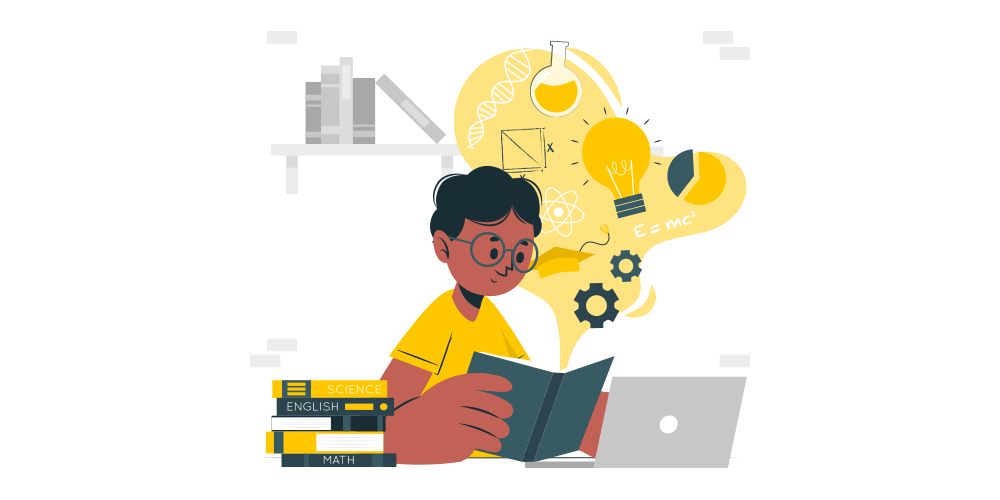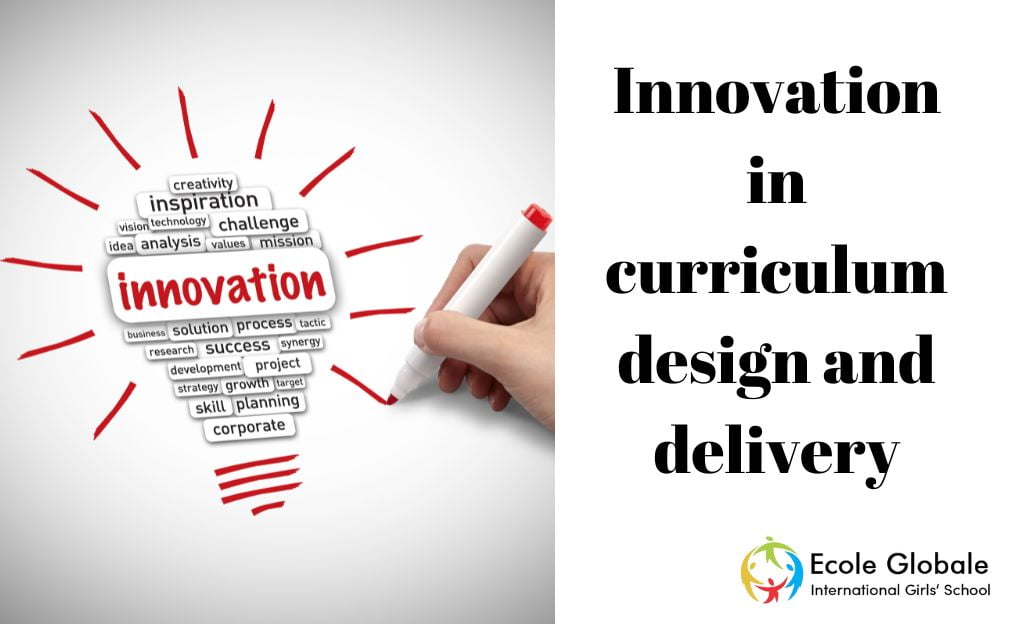As the world becomes ever more globalized, the way we teach and learn has to keep up. Education begins at home. Schools must have new strategies to reach both their students and the parents of those students. Innovation in curriculum design, delivery, and assessment needs to be looked into with great urgency to keep our children up-to-date with the latest trends in technology.
Classrooms today often fail to meet the needs of students pursuing career development in STEM (Science, Technology, Engineering, and Mathematics) disciplines. Despite the perception that traditional college and university classroom settings remain the gold standard for undergraduate education in an array of fields, there is ample evidence that alternative models of instruction can serve this significant population at least as well — and, in some instances, better.
Innovation in Curriculum Design

As per research conducted by the Best International Schools in India, The past several decades have seen a major shift in how we think about learning. The days when students were expected to memorize dates, facts, and figures are long gone. Today, students need to be able to think critically, solve problems, and collaborate with others.
Innovation in Curriculum design is a complex process that involves many stakeholders from different disciplines and perspectives. Innovation in Curriculum design should take into account these different perspectives and develop the curriculum in two stages: planning and implementation.
Identify key issues and questions
It is where you can clarify what you want to teach students and why it matters. You need to identify your goals, develop teaching content, and identify resources that will help you meet your goals and support the teaching content.
Innovation in Curriculum has Identified key concepts, principles, skills, or competencies necessary for learning those concepts and principles, etc. These are the building blocks of the curriculum which allow the creation of meaningful learning experiences for students; they are often referred to as “Learning Outcomes”.
Personalized learning

Students learn at their own pace through interactive activities that adapt based on their responses. Innovation in Curriculum help to These programs provides personalized feedback that helps students understand what they know and don’t so they can better target areas for improvement.
Personalization can also be used with traditional classroom materials and methods, such as a teacher assigning students different readings based on their comprehension levels.
Incorporating technology

Another survey done by Best Schools in India shows that One of the most significant changes in Innovation in curriculum design has been the introduction of technology into classrooms. While there are still many schools that do not have computers or Internet access, some are focusing on integrating technology into their daily curriculum.
The shift to digital learning is bringing changes to how we think about curriculum delivery. The traditional approach was to deliver content through hardcopy resources such as books, journals, or PowerPoint presentations; however, with the rise of technology, we now have access to a vast pool of resources that can be downloaded from the internet or accessed via apps on your smartphone. In addition, the introduction of new technologies such as virtual reality (VR) headsets and augmented reality (AR) glasses is giving us more ways of experiencing content than ever before. Therefore it is no surprise that educators are looking at ways to use these technologies to enhance learning experiences within school and college settings.
Benefits of a carefully designed curriculum

Thoughtful course design is an important part of the instructional process. Innovation in curriculum design leads to different learning experiences that result in significantly and substantially better learning outcomes.
Students are more likely to be engaged with a well-designed curriculum
The most effective learning experiences engage students in meaningful, purposeful, and active ways. Innovative instructional practices, such as inquiry-based and project-based learning, are widely recognized as more effective than traditional instruction. These practices focus on student engagement and motivation through active involvement.
More customizable curriculums increase student engagement
More customizable curriculums increase student engagement. Online courses allow students greater control over their learning experience by allowing them to set their own pace for completing assignments, interact with teachers through multimedia communication tools (such as Skype), and access resources whenever they need them. It allows teachers more time to focus on individual student needs rather than getting bogged down by logistical tasks like grading papers or managing classrooms full of students at different levels of development.
Feedback from students is important for Innovation in curriculum design
It can be done through focus groups for surveys, but face-to-face interviews are best if you want honest feedback from your students for curriculum design.
Once you have this information, you can decide whether or not it is worth changing your design based on their opinions or if you should proceed as planned with minor changes based on what they said in their interviews.
Delivery
The first thing to note is that these changes do not all have to be implemented at once. The trick is to find the ones that work best for you and your students — and then use them. Online learning has opened up several possibilities for higher education institutions and learners. Innovation in curriculum design and delivery allows institutions to transform how they deliver their courses, providing unique opportunities for students.
Create a climate of excitement and anticipation

A good way to engage students is to create a sense of excitement and anticipation about what they will learn in each course. It will help them feel more confident about their chosen field of study. Thereby encouraging them to put their best foot forward.
The best way to engage students is to create an environment where they can learn from their mistakes and gain confidence as they progress through their learning journey. It is one reason why online learning has become so popular; it allows students to make mistakes without fear of judgment or embarrassment.
Innovate by creating an environment where students can try things out without being judged for failure. Make sure there are clear guidelines about what constitutes success in your class (such as passing grades). But beyond that, let your students know that if they want to try something new or experiment with a new method, you will support them in every step.
Connect course experiences to students’ professional aspirations
Successful learning comes down to relevance and it comes from understanding. Our students are not all the same. They need a range of ways to learn and prove their knowledge. The best way for them to do this is through real-world experiences that help them develop the skills that employers want.
We know that our students will be working in an environment where they will have diverse needs; from managing large teams, developing new products and services, or delivering high-quality customer service. They need the skills to succeed in these roles and we can provide them with those opportunities through experiential learning.
Integrate learning experiences where students apply what they learn in theory through the practical application of skills, knowledge, and abilities in real-life situations or settings outside the classroom (e.g., internships).
Benefits of systematic delivery
Systematic delivery is an approach that has a clear structure and sequence of events, where each event has been designed to support learning outcomes.
More efficient use of time
It gives students clear expectations about what they will learn and how they will demonstrate their knowledge. It also allows them to access the information when needed.
innovation in education can be as simple as doing things in a new way, requiring different approaches, processes, products, or strategies.
Improved student learning outcomes
New technology tools are helping educators improve student outcomes by providing personalized learning experiences that adapt to each student’s needs. Innovation in curriculum design and delivery is improving student engagement and achievement and reducing dropout rates.
Better teacher satisfaction
A more effective way to teach is because it is more structured and predictable, which means that the teacher knows exactly what they need to do at each stage of the lesson.
The first benefit is that it enables teachers to become more creative in their approach to teaching. Teachers can integrate technology into their teaching to enhance their ability to think creatively but still adhere to core standards. It means that students can experience multiple perspectives on a subject matter or topic, which increases engagement and interest.
Conclusion
Investing resources in good delivery and design pays off in the end.
Innovation in education can lead to better overall outcomes in the school environment. Innovative classrooms are filled with students who are developing stronger communication skills and building engagement capacity among their peers.
The use of technology in education has been growing over the years. The use of digital learning tools has been increasing rapidly over the past few years because they give students the flexibility to learn at their own pace, track their progress, and access information from anywhere.
For any queries related to parenting, schooling, or any student-related tips, click here to check out our latest blogs.






